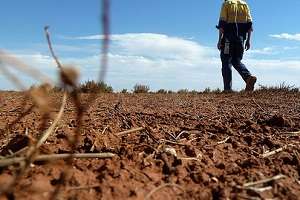Pilbara water and climate prospects examined

THE CSIRO is part-way through a systematic investigation of the Pilbara's future climate and water resources.
Hydro-geologist Don McFarlane says the State Government approached CSIRO to undertake the study.
"The two main issues are water supply for the towns on the coast but also for the industry on the coast," Dr McFarlane says.
"In the inland areas it's more a matter of getting access to the ore which is below the water table."
He says a lot of water extracted in the process has to be disposed of.
Some is used in ore processing, and some is put into creeks and some gets re-injected back into aquifers.
Much of the study to date consists of a region-wide review of old data.
"There's been a lot of monitoring since about 1910, an enormous amount of intensive work done in small areas in the Pilbara," Dr McFarlane says.
"The major focus of our project is to put all of that intensive work into more of a regional context.
"A fair part of that report [analyses] what the trends have been in rainfall and other climatic parameters since about 1910.
"The western part of the Pilbara has had a bit of a drying trend … that seems to be related a little bit to the drying that's happened in the south-west of WA.
"The front that usually comes through used to go quite far north … some rainfall you used to get up there each winter, but now the front's been pushed further south.
"On the eastern part it's been if anything getting slightly wetter."
He says once the review of old data is complete, the study's second phase will model climate projections for 2030 and 2050, projecting two emissions scenarios.
"We don't know how much carbon dioxide is going to be in the air so we look at a medium and a high-emissions scenario and look at what that impact might have, particularly on rainfall."
He says they need to understand historical trends to interpret what might happen in future in an effort to explain why certain parts of the Pilbara have been getting drier or wetter.
A warming of two degrees, for example, would impact on the region's ecology.
"Plants and animals might have been able to get through the glacial maxima but probably not when facing the temperatures that we might get by 2050," he says.
More information: www.csiro.au/PilbaraWRA
Provided by Science Network WA



















